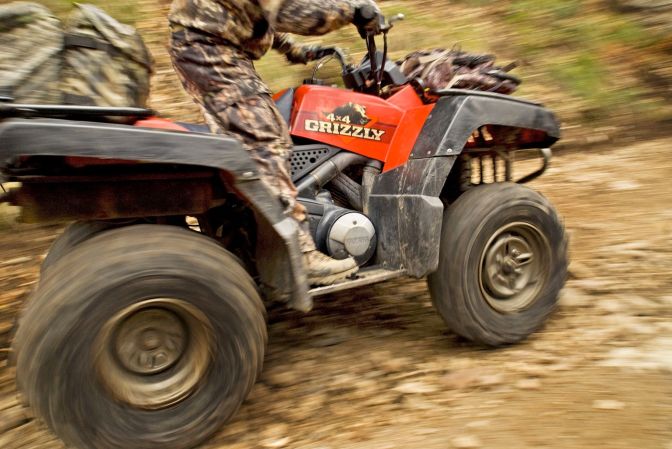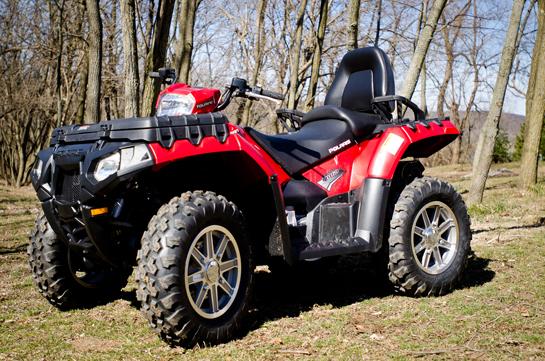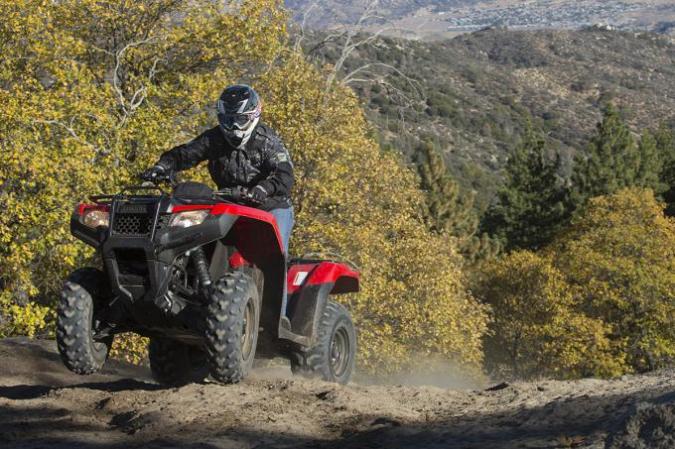We may earn revenue from the products available on this page and participate in affiliate programs. Learn More ›
A four-wheeler is not an amphibious vehicle. After all, the “T” in ATV stands for terrain. Yet some would argue that a creek is just terrain covered by water, so why not keep riding? At some point, however, water overwhelms terra firma, and we need either a bridge or a boat.
I thought we’d just about reached that point of transition during a ride in the Hayes Lake region of far northwestern Minnesota, an area known to locals as “The Bog,” and for good reason. We were riding on section roads that laced through alternating prairie and pine forest, and the trails were often overwhelmed by wetlands that stretched to the horizon. The terrain would start out pretty firm, but it gradually grew spongy and then wet. Pretty soon we were making a wake through water that washed over our boot tops as we stood on the footboards. Because I couldn’t see through the murky water, it was impossible to spot obstacles lying ahead of us. More than once we even lost track of the submerged trail. Machines got high-centered and tangled on underwater snags, and by the end of the day we’d burned up a couple of winches.
TAKE IT SLOW
Lack of visibility is probably the biggest hazard a rider faces when confronted with deep water or mud. Read your owner’s manual, and you’ll find advice to limit operation in water to a depth of 14 inches, or about the level of the footboards or pegs. If you take it slowly, an ATV’s tires should be able to roll over most obstacles that lie below water of this depth. Note that I said “slowly.”
If life were a video game, it would be okay to charge across a creek at full throttle. In real life, however, hitting water at speed can cause your wheels to hydro-plane, which can result in the loss of steering control. Worse yet, if you’ve misjudged the depth of the water, you might find yourself up to the handlebars on a drowned machine. If you can’t see through the water, you are riding blind and need to take it easy.
WATCH RUSHING WATER Clear, shallow water can pose a hazard if it’s moving fast, a lesson I learned when crossing an axle-deep mountain creek in Color-ado. The rocks on the bottom were slick, and at some point the water became deep enough to cause the tires to get a little buoyant. The force of the water rushing against the wheels started to push my rig downstream until one wheel dropped into a hole and things got a bit precarious. I found some traction and drove out of that situation. The lesson learned? Even the biggest ATV is no match for rushing water.
WRING OUT YOUR BRAKES After any water crossing, make a few quick stops to dry your brakes. If you get into really deep water, stop on dry land and drain any water that might have entered the air intake box, or the transmission case if your machine has a belt-drive transmission. Check your owner’s manual for the location of drain plugs or hoses on your machine.
Quick Tip Silt carried into the transmission when you ride in deep water can damage the clutches. If muddy water drains from the case, remove the cover and rinse the transmission when you get home.
CLUB CAR 4X4
A fully automatic, all-wheel-drive system is a key feature of the new Club Car XRT 1500 4X4 utility vehicle. The IntelliTrak system continuously monitors traction at each wheel and automatically engages high/low range and all-wheel-drive as necessary.
The XRT 1500 features two adjustable bucket seats, an electric lift for the 48- by 50-inch cargo box, four-wheel disc brakes and full rollover protection. Bed capacity is 800 pounds, or 1,050 pounds with high-capacity springs. Power options include a 20 hp, air-cooled Honda GX620 gas engine (base price $9,550) or a 20 hp, liquid-cooled Kubota D722 diesel (base price $10,875). (800-800-1227; www.clubcar.com)




